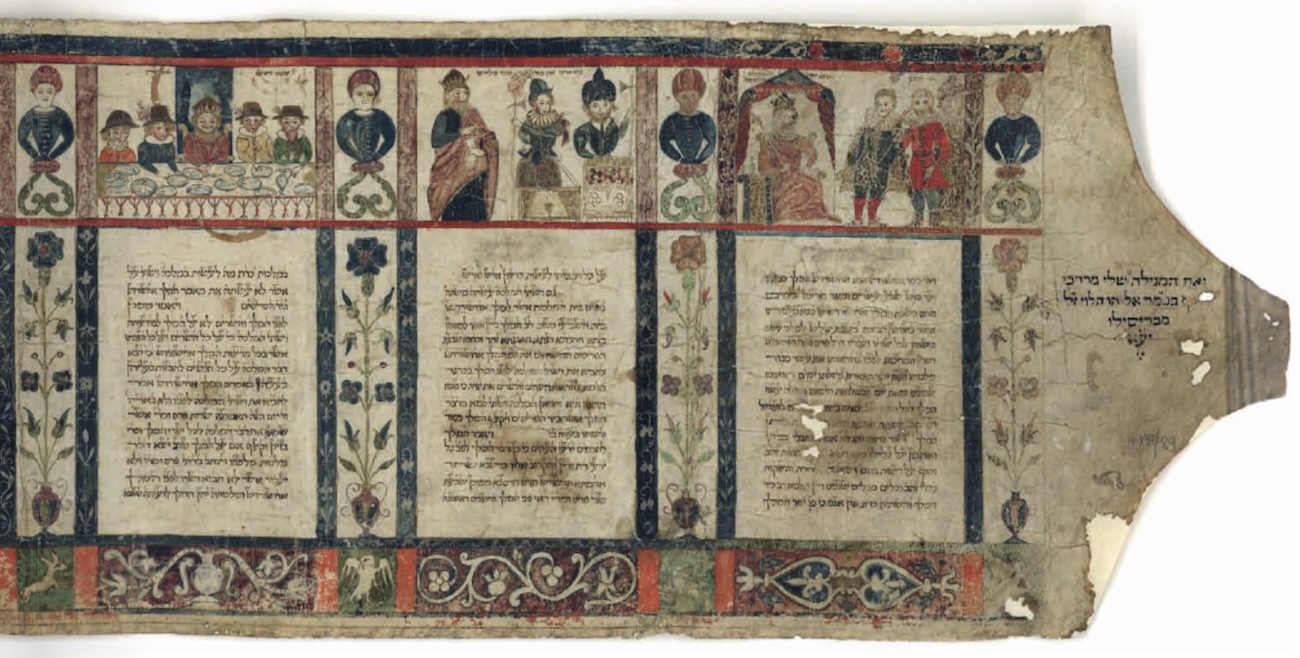PURIM – Beautiful Esther

Also known as the Megillah (the Scroll) in Hebrew, the Book of Esther is a fascinating and mysterious biblical text. The heroism of Esther, the young Jewish queen who saves her people from annihilation at the hands of the heinous Hamman, is just one of the many perspectives the story offers. The story of Purim, the Jewish festival celebrating this saving, is in fact also a story of secrets, of deception and hidden identities, in which God’s presence remains hidden but the role of women stands out.
On March 12, the day of Purim, a new exhibition – Beautiful Esther. Purim, a timeless story – opens at the National Museum of Italian Judaism and the Shoah (MEIS) in Ferrara to explore the many aspects of this festival in rituals, arts and cultural interpretations. The exhibition, which runs through June 15, unfolds through Renaissance works of art, precious parchments and historical artifacts that tell the story of Esther: a woman who was able to change the fate of her people. It is a story of courage and determination that has been passed down through the ages and celebrated with banquets, costumes and theatrical performances in which the role of women is central, exploring the reversal of fortune and the liberation of the Jewish people.
“The exhibition has four intertwined themes,” explained Amedeo Spagnoletto, Director of MEIS. “First, an in-depth description of the enigmatic, fascinating figure of Esther and her success in the Renaissance painting tradition. This is followed by a section on the precepts and customs. Visitors then enjoy a focus on the Purim Sheni, local celebrations commemorating events from which Jews miraculously escaped. Finally, a contemporary and interactive reading of the festival conveyed with modern illustrations by Laura Guglielmo.”
Unique pieces are on display: from Renaissance masterpieces such as Esther before Ahasuerus (1475-1480 c.) by Jacopo del Sellaio, Queen Vashti leaving the Royal Palace (1475 c.) by Filippino Lippi, to the contemporary works of Tobia Ravà’s, to conclude with a an outstanding selection of Megillot – the illuminated scrolls of the Book of Esther– including the extremely rare 17th-century Megillah by Shalom Italia, partly printed and partly illuminated, or the parchment scroll made in Ferrara by Moshe Ben Avraham Pescarol in the 17th century. Visitors can also enjoy period photographs and ritual objects that tell the story of Purim and bear witness to real lives in the communities of their time.
Beautiful Esther is curated by Rabbi Spagnoletto, Olga Melasecchi and Marina Caffiero, with the collaboration of Sharon Reichel, and designed by architect Giulia Gallerani. It follows the success of the 2024 exhibition at the Jewish Museum of Rome, with which the exhibition is organized, with the addition of new works and original ideas.
A special section is devoted to the Purim sheni, the local celebrations that draw inspiration from the Biblical story of Esther and established by Jewish communities to remember episodes of their salvation from imminent dangers. Exhibits include The Syracuse Purim established in 1405, the Leghorn Shabbat of Earthquakes established in 1742 and the story of Leone Vita’s family from Ferrara that miraculously escaped a fire in 1758.
